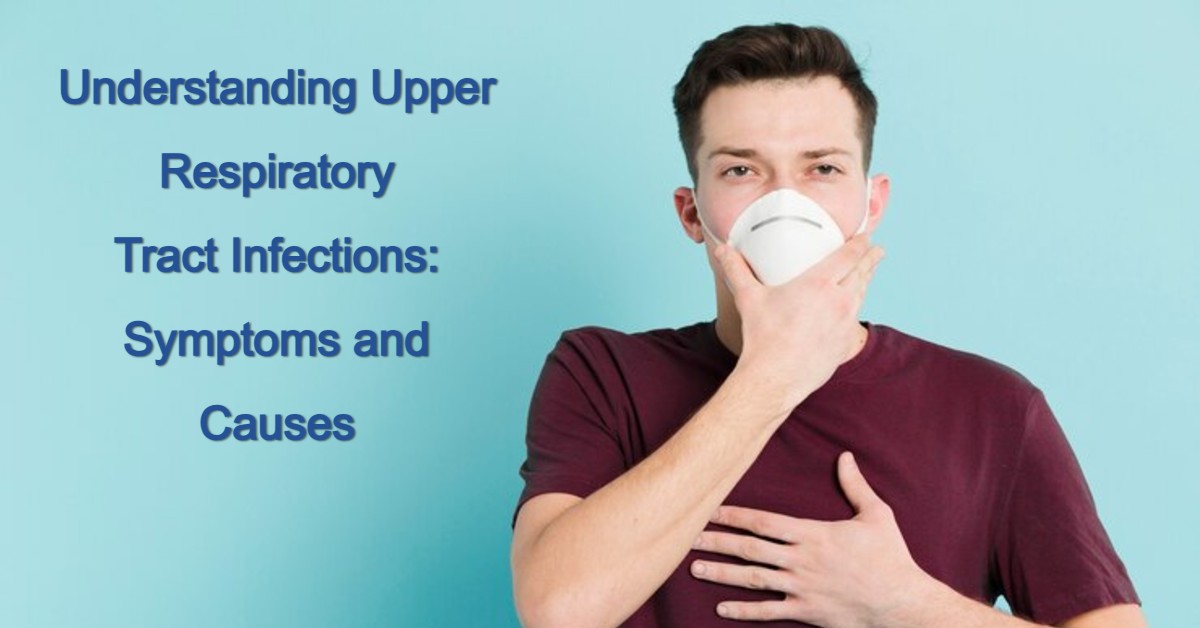The upper respiratory tract is essential for our breathing and overall well-being, comprising the nose, throat, and sinuses. Unfortunately, it is also prone to infections, especially during seasonal changes or exposure to certain environmental factors. This blog delves into the symptoms and causes of upper respiratory tract infections (URTIs) to help you better understand and manage this common condition.
What Are Upper Respiratory Tract Infections?
Upper respiratory tract infections refer to infections that affect the upper portion of the respiratory system, including the nasal passages, sinuses, pharynx (throat), and larynx (voice box). They are typically caused by viruses, though bacterial infections can also occur in some cases. URTIs are among the most frequent reasons for doctor visits worldwide.
Common Symptoms of Upper Respiratory Tract Infections
The symptoms of URTIs can vary depending on the specific area affected and the severity of the infection. Common symptoms include:
- Nasal Symptoms
- Runny or stuffy nose (nasal congestion)
- Sneezing
- Loss of smell or reduced ability to smell
- Throat Symptoms
- Sore throat or irritation
- Hoarseness
- Difficulty swallowing
- General Symptoms
- Cough (may be dry or productive)
- Mild fever
- Fatigue
- Headache
- Body aches
- Other Possible Symptoms
- Ear pain or pressure
- Watery or itchy eyes
- Swollen lymph nodes in the neck
Causes of Upper Respiratory Tract Infections
Several factors can lead to upper respiratory tract infections. Below are the primary causes:
- Viral Infections
The majority of URTIs are caused by viruses, such as:
- Rhinoviruses (the most common cause of the common cold)
- Influenza viruses
- Coronaviruses
- Respiratory syncytial virus (RSV)
- Bacterial Infections
Although less common, bacterial infections can cause URTIs. Examples include:
- Streptococcus pyogenes (responsible for strep throat)
- Haemophilus influenzae
- Moraxella catarrhalis
- Environmental and Lifestyle Factors
- Exposure to allergens such as pollen, dust, or mold
- Smoking or exposure to secondhand smoke
- Air pollution or irritants
- Poor hand hygiene, leading to viral or bacterial transmission
- Weakened Immune System
Individuals with compromised immune systems are more susceptible to URTIs. Conditions such as diabetes, chronic illnesses, or recent illnesses can weaken the body’s defenses.
How Are Upper Respiratory Tract Infections Spread?
URTIs are highly contagious and spread primarily through:
-Respiratory droplets: Sneezing, coughing, or talking can release droplets containing the virus.
- Direct contact: Touching infected surfaces and then touching your face (eyes, nose, or mouth).
- Close contact: Being in close proximity to an infected person increases the risk.
When to See a Doctor?
While most URTIs resolve within 7-10 days with rest and home care, certain symptoms may indicate the need for medical attention:
- Persistent fever (above 101°F for more than 3 days)
- Severe sore throat or difficulty swallowing
- Shortness of breath or wheezing
- Symptoms lasting more than 10 days or worsening after initial improvement
Prevention Tips
- Wash your hands frequently with soap and water.
- Avoid touching your face, especially the eyes, nose, and mouth.
- Maintain good respiratory hygiene by covering your mouth and nose when sneezing or coughing.
- Stay hydrated and maintains a healthy diet to boost your immune system.
- Avoid close contact with infected individuals.
Conclusion
Upper respiratory tract infections are a common health issue that can cause discomfort and disrupt daily life. Understanding the symptoms and causes is crucial for early recognition and proper management. By adopting preventive measures and maintaining a healthy lifestyle, you can reduce your risk of developing URTIs and keep your respiratory system in optimal condition.
If you experience severe or persistent symptoms, consult a healthcare provider to ensure proper diagnosis and treatment. At SRS Hospital, our expert team is here to provide comprehensive care and support for all your health concerns.

